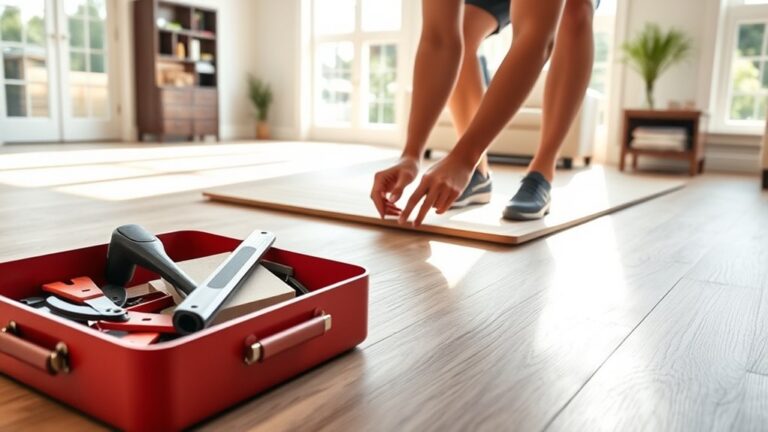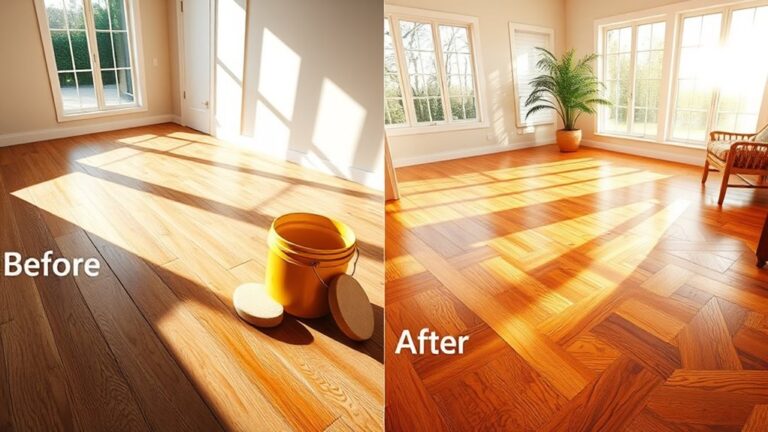To fix epoxy floor mistakes, first, identify the issue and carefully scrape off any excess epoxy using a handheld scraper or putty knife. Then, use a diamond grinding tool to smooth out any uneven areas.
Common Mistakes In Epoxy Floor Installation
Common mistakes in epoxy floor installation can lead to a less-than-desirable outcome. Lack of proper surface preparation can cause issues down the line, so it’s essential to clean and dry the floor thoroughly before starting the process. Failure to remove contaminants and debris can affect the adhesion of the epoxy, resulting in a subpar finish. Another mistake is an incorrect ratio mixing of the epoxy components; accurate measurements are crucial for a successful application. Mismatched ratios can cause problems such as improper curing and a weakened resin layer. Inadequate application techniques, such as uneven spreading of the epoxy mixture, can create an unsightly, uneven surface. Additionally, air bubbles and trapped debris can mar the final result. To fix epoxy floor mistakes, it’s important to address these issues and ensure a proper installation process.
Assessing And Identifying Epoxy Floor Mistakes
Assessing and identifying epoxy floor mistakes is crucial in order to fix them effectively. One of the first steps in the process is conducting a visual inspection of the floor. This involves evaluating issues such as unevenness and rough texture. It is also important to identify problems like bubbles, cracks, and discoloration.
Understanding the causes of common floor problems is essential for mapping mistakes to their root causes. This helps in recognizing patterns in installation errors. Additionally, conducting moisture and adhesion tests is crucial. Proper moisture assessment plays a significant role in the durability and longevity of an epoxy floor. Testing the bond strength of the epoxy coating is also essential to ensure its effectiveness and durability.
Step-by-step Guide To Correct Epoxy Floor Mistakes
Surface preparation is a crucial step in fixing epoxy floor mistakes. Proper cleaning and degreasing techniques should be employed to ensure a clean and smooth surface. Any cracks or imperfections should be repaired before applying the epoxy coating. Correct mixing ratios are essential for a successful application. It is important to adjust the proportions of epoxy components accurately, and using digital scales can help achieve this. When applying the epoxy coating, techniques for avoiding uneven spread should be employed to ensure a consistent and seamless finish. To eliminate air bubbles, tips such as using a roller or squeegee and working in small sections can be effective. Sanding and smoothing the epoxy floor is necessary for achieving a smooth finish. Choosing the appropriate grit sandpaper is crucial for this step. Lastly, patching and repairing any cracks, chips, or damages and blending them with the rest of the floor is essential for a flawless final result.
Preventing Future Epoxy Floor Mistakes
Epoxy floors can be a durable and long-lasting flooring option if installed and maintained correctly. To prevent future mistakes, it is crucial to follow the manufacturer’s instructions. One important step is to carefully read and understand the product labels, as they provide valuable information about the application process and any specific requirements. Additionally, it is essential to adhere to the recommended temperatures and curing times, as these factors can significantly impact the final result. Regular maintenance and care are also necessary to keep the epoxy floor in optimal condition. This includes cleaning and protecting the floor using appropriate cleaning products. However, if mistakes do occur or if you are unsure about any step in the installation or maintenance process, it is recommended to seek professional assistance. Consulting an epoxy flooring expert can help rectify any issues and ensure a successful installation. Ultimately, considering professional installation can also provide additional benefits, as experienced installers have the knowledge and expertise to deliver a high-quality and mistake-free epoxy floor.

Frequently Asked Questions Of How To Fix Epoxy Floor Mistakes
How To Fix Epoxy Floor Bubbling?
To fix epoxy floor bubbling, first identify the cause, such as moisture or improper mixing. Then, sand down the affected area, remove the bubbles, and clean the surface. Apply a new layer of epoxy, following manufacturer instructions and ensuring proper ventilation.
Allow it to cure thoroughly for a smooth, bubble-free finish.
What Should I Do If My Epoxy Floor Is Peeling?
If your epoxy floor is peeling, it may be due to poor adhesion or inadequate surface preparation. To fix it, start by removing the peeling areas with a floor scraper or grinder. Then, clean and prepare the surface thoroughly. Apply a high-quality primer and recoat the floor with a new layer of epoxy, ensuring proper curing time for optimal adhesion.
How To Remove Scratches From An Epoxy Floor?
To remove scratches from an epoxy floor, start by cleaning the area with a mild detergent and water. Use a fine-grit sandpaper or sanding pad to sand down the scratch gently. Clean the area again and apply a thin layer of epoxy using a brush or roller.
Allow it to cure according to the manufacturer’s instructions.
Conclusion
To wrap up, avoiding epoxy floor mistakes is crucial in achieving a flawless finish. By thoroughly preparing the surface, using high-quality materials, and applying the epoxy properly, you can ensure long-lasting and visually appealing results. Stay vigilant during the application process, and address any errors promptly by following the steps outlined in this guide.
With these tips in mind, you’ll be able to fix any epoxy floor mistakes and enjoy a beautiful and durable flooring.




